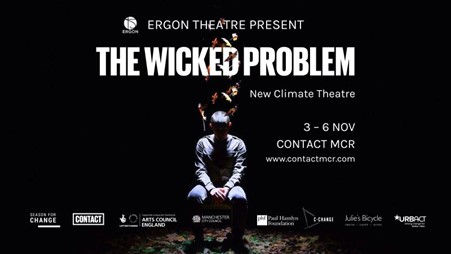1,2,3, Cut: Green Creative Industries!
- Mohsin Rashid
- Sep 1
- 3 min read
(Written By: Özge Hazal Aydin)
The creative industries, movie, television, and live theatre, are built on imagination and visualization. But behind this inspiring side, there is a growing environmental cost. From the high energy consumption of the sets to disposable materials and long-haul travel, the carbon footprint of the creative industry is real and increasingly unsustainable. Fortunately, across the sector, things are changing; there is a revolution across the way to become more environmentally friendly.

Behind the Scenes: A Hidden Environmental Cost:
Big-budget Hollywood movies can emit thousands of tonnes of CO₂ are comparable to powering hundreds of homes for a year. Even smaller productions, whether for streaming or live performance, use significant amounts of energy, non-recyclable materials, and CO₂ through transportation. On the other hand, theaters face their own challenges: touring shows, fast set turnover, and lighting rigs all contribute to the industry’s growing environmental impact.
Digital production hasn’t solved the problem, either. Cloud storage and post-production tools rely on high-energy data centers, while e-waste, water consumption, and rare-earth mineral use raise other sustainability issues. As public pressure grows, creative industries are being pushed to reimagine not just the stories they tell but how they make them.
Tools for Change: Certification and Action:
A number of practical tools are helping drive this shift. The Green Production Guide, backed by the Producers Guild of America, offers emissions calculators and eco-friendly vendor lists. In the UK, Albert, run by BAFTA, is now a required standard for most national broadcasters. It helps teams measure carbon output and adopt low-impact practices, like switching to renewables or reusing sets.
Across the Atlantic, the Environmental Media Association (EMA) awards “Green Seals” to productions that hit sustainability benchmarks. These certification systems aren’t just about compliance—they’re pushing productions to embed sustainability from day one.

Creative Solutions: Greener Sets and Smarter Practices:
Plenty of productions are already leading by example. Call of the Wild achieved over 80% waste diversion through careful planning and material reuse. Fifty Shades Freed donated props and supplies to local communities instead of sending them to the landfill.
Meanwhile, innovation in design is creating new options. UK-based Vectar Sets offers recyclable, paper-based set materials that are strong enough for heavy use but carbon-neutral and landfill-free. Their work is now being used in major ad and TV productions.
Transport and power remain major emissions drivers. But cleaner options from LED lighting and electric vehicles to smarter generator use are increasingly available and affordable.
Shaping the Narrative: Sustainability as Storytelling:
Sustainability isn’t just about production logistics; it’s also about the stories we tell. The non-profit Good Energy helps writers and producers integrate accurate, compelling climate themes into their scripts. Their Playbook for Screenwriting in the Age of Climate Change offers tools to tackle the climate crisis on-screen, without clichés or despair.
In theatre, groups like Ergon Theatre are leading the way with performances that model low-impact practices and explore environmental themes. Their play, The Wicked Problem, launched during COP26, earned praise for being both artistically strong and environmentally conscious.

What’s Next? Policy, Pressure, and Possibility:
While there’s real progress, systemic challenges remain. At the UK’s Creative Industries 2025 conference, leaders highlighted the lack of standardisation, data-sharing, and government support. Calls for stronger policies, better education, and funding tied to sustainability are growing louder.
Voices from inside the industry are speaking up too. In 2025, actor Benedict Cumberbatch called out “grotesque waste” in Hollywood, urging a complete rethink of on-set culture from transport and trailers to single-use plastics. “It doesn’t have to be this way,” he said, and he’s right.
A Greener Industry Is Possible:
If any sector can adapt, it’s the creative one. With new tools, inspired leadership, and a groundswell of public demand, film, TV, and theatre have a unique chance to lead not only in the stories they tell, but in how they’re made. Sustainable creativity isn’t just a trend, it’s the future of entertainment.
Explore Further:
● 🎬 Green Production Guide – Tools for eco-friendly production
● 🌍 Albert Certification – UK sustainability standard for screen content
● ✍️ Good Energy Playbook – Climate storytelling toolkit
● 🌱 Vectar Sets – Sustainable set design innovation
● 🎭 Ergon Theatre – Performance meets climate action




Comments